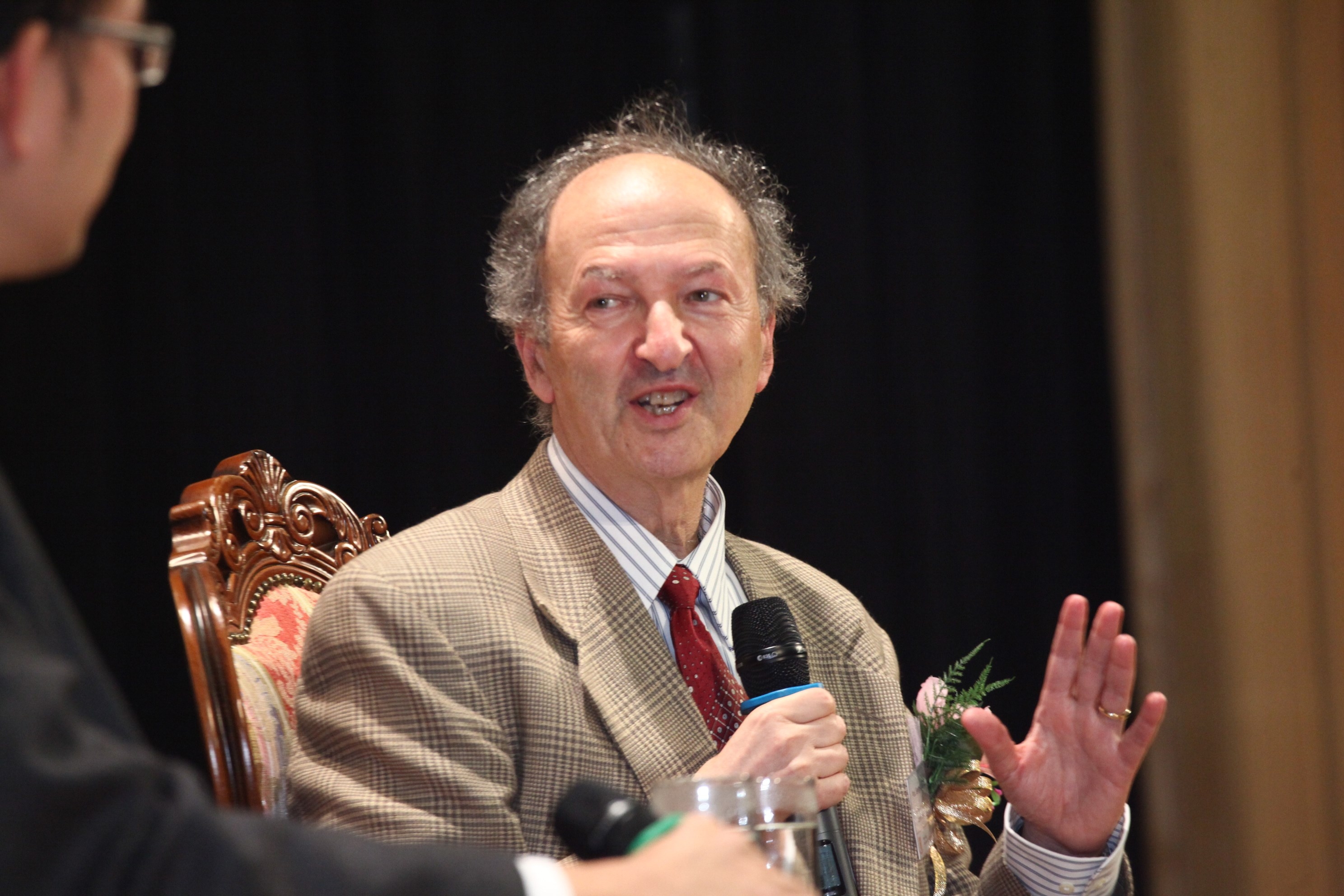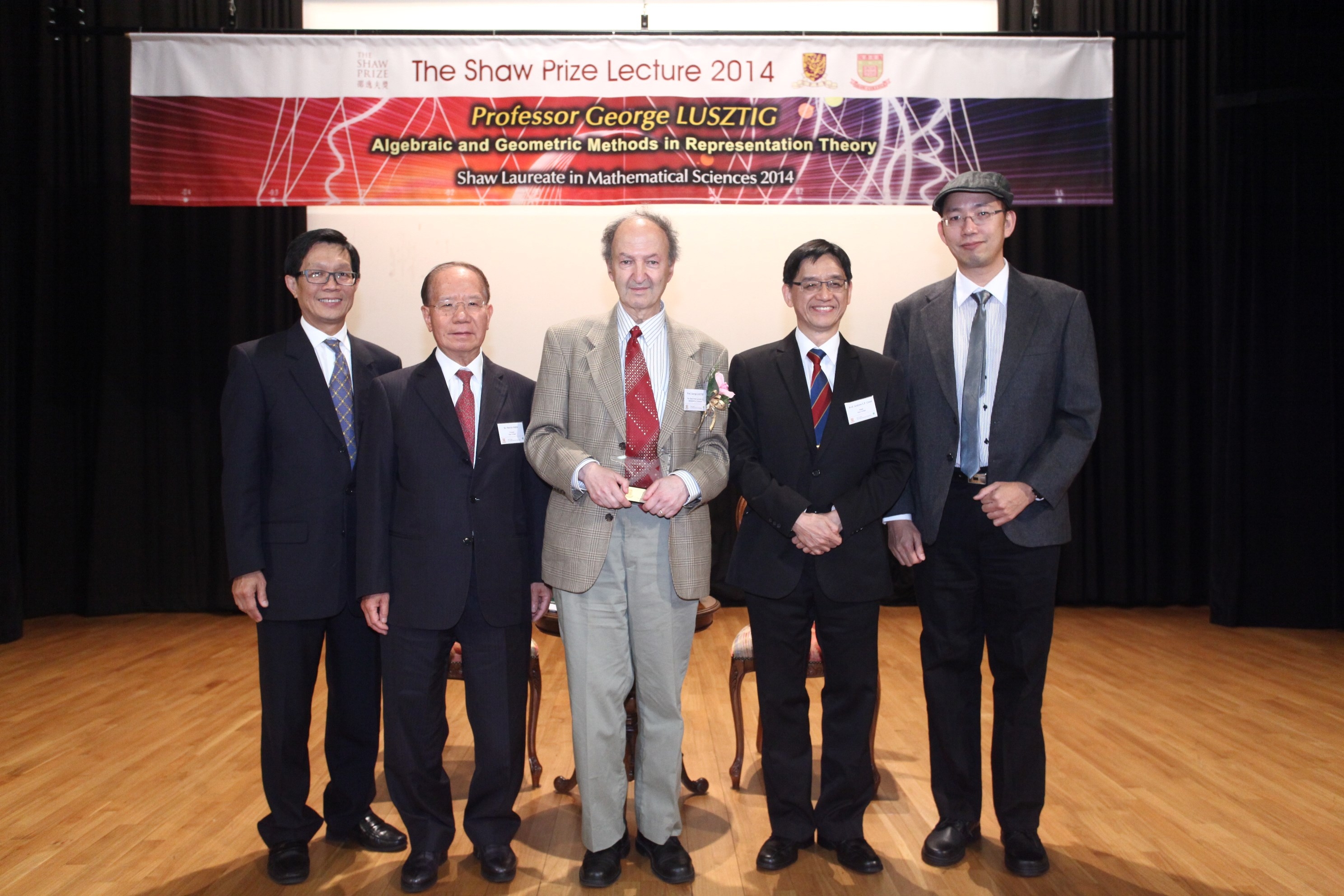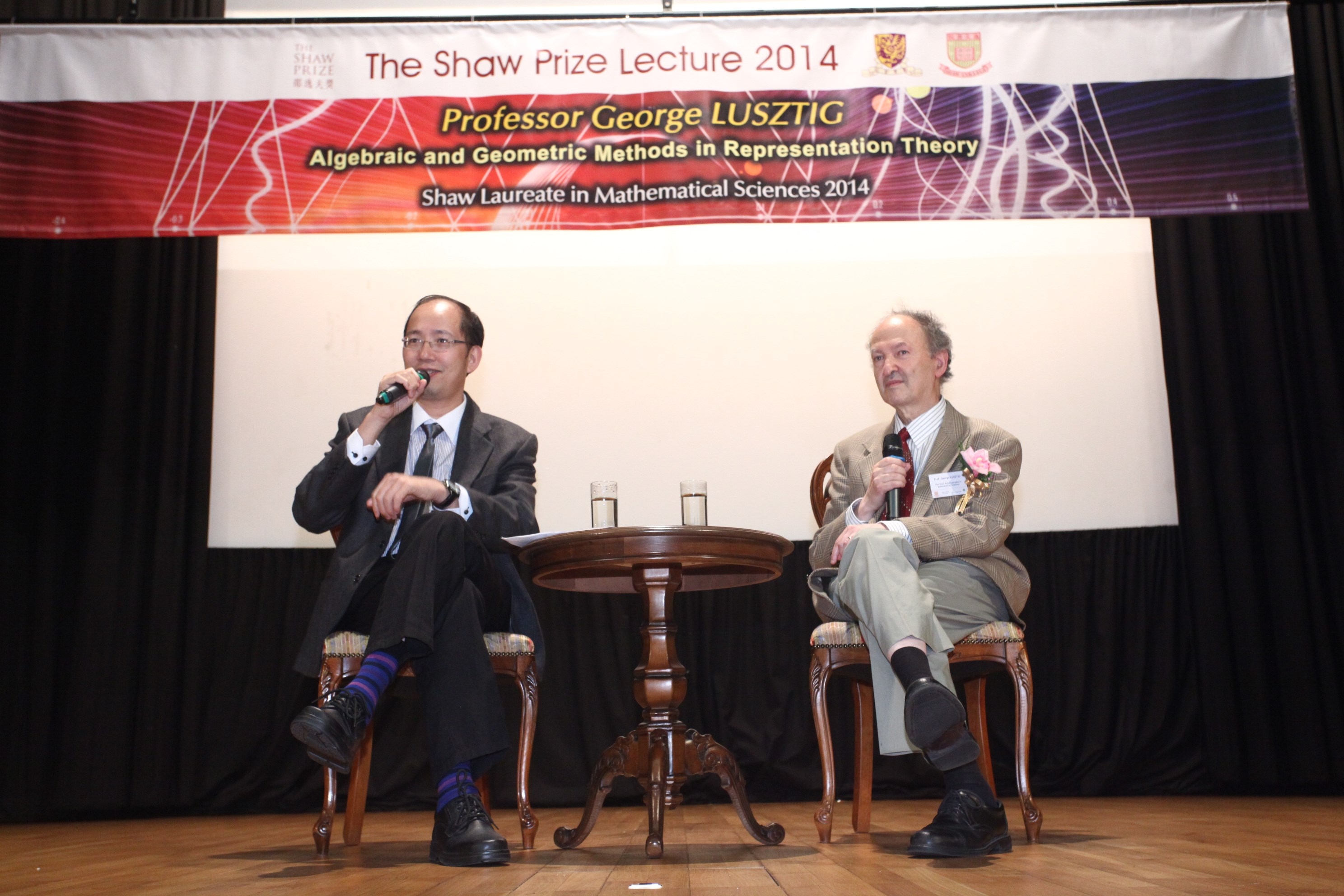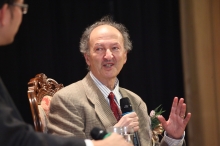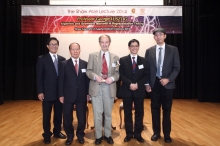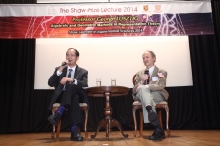CUHK
News Centre
CUHK hosts The Shaw Prize Lecture by Prof. George Lusztig on Mathematical Sciences
Prof. George Lusztig, The Shaw Prize Laureate in Mathematical Sciences 2014, gave a lecture on “Algebraic and Geometric Methods in Representation Theory” yesterday (25 September) at Shaw College of The Chinese University of Hong Kong (CUHK). The lecture attracted close to 300 staff and students from CUHK and local universities, professionals in the field, as well as secondary school teachers and students.
In this Lecture, Prof. George Lusztig spoke about how representation theory of finite groups of Lie type has evolved in the years since its foundation in 1896. He explained how methods from outside of group theory such as cohomology theories of algebraic varieties in characteristic p have played a key role in progress towards understanding the representations of finite groups of Lie type.
The Shaw Prize in Mathematical Sciences 2014 was awarded to Prof. George Lusztig, Abdun-Nur Professor of Mathematics at the Massachusetts Institute of Technology in recognition for his fundamental contributions to algebra, algebraic geometry, and representation theory, and for weaving these subjects together to solve old problems and reveal beautiful new connections.
Starting with his early work in the 1970s and 1980s, in part jointly with Deligne, Professor Lusztig gave a complete description of the representations of finite Chevalley groups, these being the building blocks of finite symmetry groups. The Deligne–Lusztig description uses the topology and geometry of Schubert varieties. The latter were introduced in the nineteenth century as a tool to count solutions of algebraic equations.
The vision of this work is that the algebraic subtleties of representation theory correspond perfectly to the geometric/topological subtleties of Schubert varieties. This vision has grown into a broad and powerful theme in Professor Lusztig’s work: he has shown that many central problems in representation theory — including those of real and p-adic Lie groups, which are the language of applications from number theory to mathematical physics — can be related to topology and geometry by means of Schubert varieties. This idea is at the heart of many exciting recent developments, for example in progress toward the Langlands programme in automorphic forms.
Representations are complicated, as are the Schubert varieties to which they are related. Beginning in a 1979 paper with David Kazhdan, and continuing through his most recent work, Professor Lusztig has found combinatorial tools to describe their topology and geometry. (These tools are easy to describe, but had not been used previously in mathematics.) His ideas have guided and inspired the development of perverse sheaves, a tool for studying the topology of general singular algebraic varieties.
These tools, in the hands of Professor Lusztig and of hundreds of other mathematicians, have made possible a depth of understanding of representations and of Schubert varieties that was unimaginable before his work.
Prof. George Lusztig was born in 1946 in Timisoara, Romania and is currently Abdun-Nur Professor of Mathematics at the Massachusetts Institute of Technology. He graduated from the University of Bucharest, Romania, in 1968, and received both the MA and PhD in Mathematics from Princeton University in 1971. From 1971 to 1977, he was at the University of Warwick, UK and became a professor in 1974. Since 1978, he has been a professor at the Massachusetts Institute of Technology. He was named Honorary Member of the Mathematics Institute of the Romanian Academy in 2005. He is a Fellow of the Royal Society of London, UK and of the American Academy of Arts and Sciences, and a member of the US National Academy of Sciences.
About The Shaw Prize
The Shaw Prize is an international award that honours individuals who are currently active in their respective fields and who have achieved distinguished and significant advances, who have made outstanding contributions in culture and the arts, or who in other domains have achieved excellence. This is the eleventh year that the Prize has been awarded since 2004 after being established under the auspices of Sir Run Run Shaw in November 2002. It consists of three awards: the Prize in Astronomy, the Prize in Life Science and Medicine, and the Prize in Mathematical Sciences.
(From left) Prof. Ching Pak-chung, Pro-Vice-Chancellor, CUHK; Dr. Huen Wing Ming, Trustee of Shaw College; Prof. George Lusztig, The Shaw Laureate in Mathematical Sciences 2014; Prof. Andrew C.F. Chan, Head of Shaw College; and Prof. Leung Nai-chung, Conan, Professor of Department of Mathematics, CUHK.


